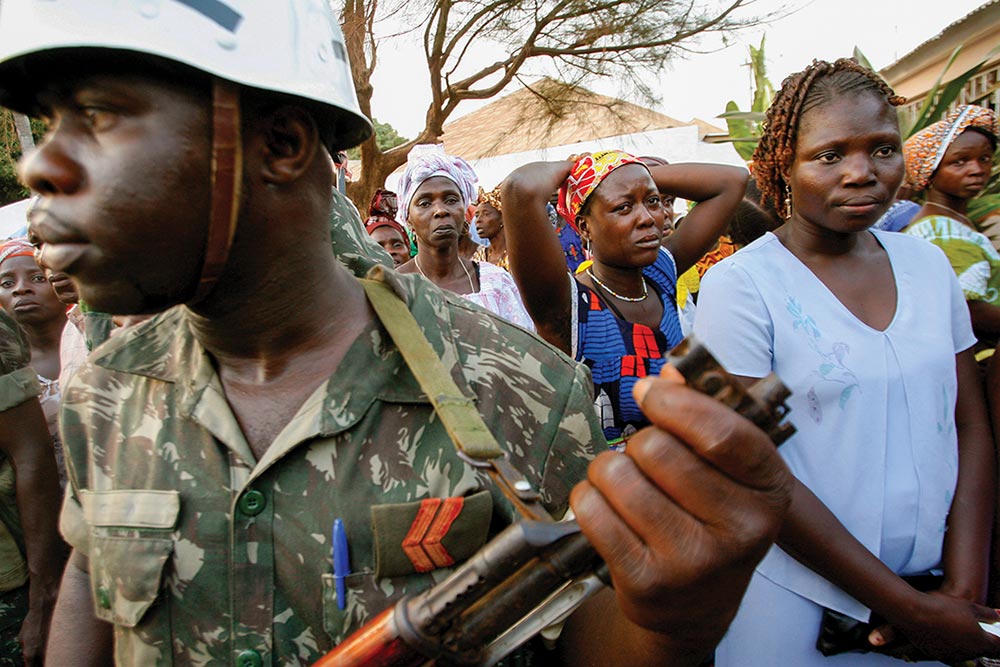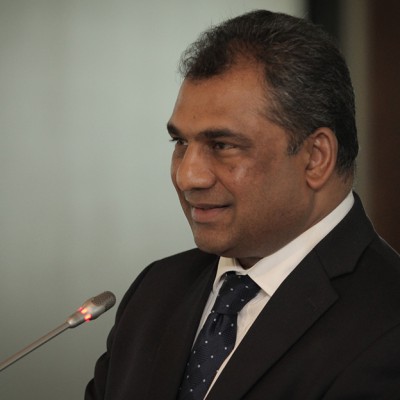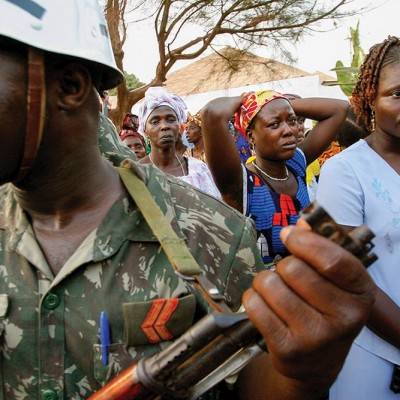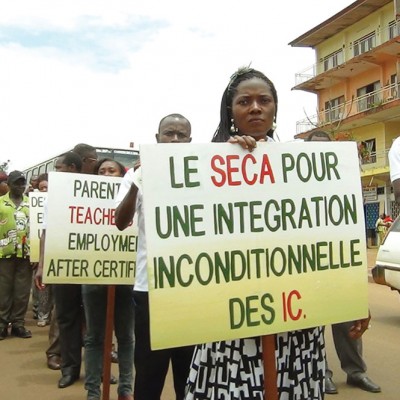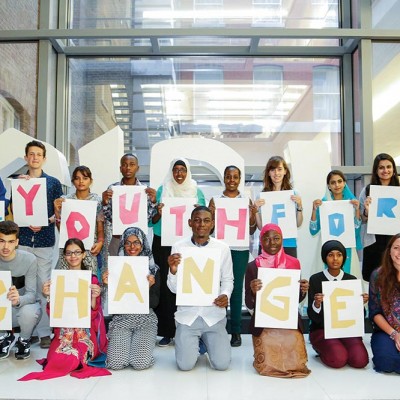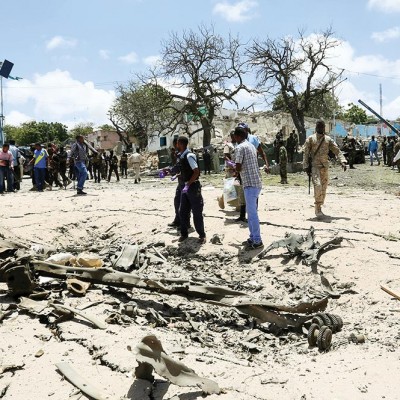Background
Protracted political instability in Guinea-Bissau continues to impede the effective functioning of state institutions and undermine socio-economic development and prospects for investments. Guinea-Bissau has remained in a political dilemma over the past few decades, with recurring crises and little possibility for resolution.1 A number of structural factors contribute to the country’s political instability, underdevelopment and state fragility. These factors include poverty, illiteracy, lack of access to justice, ineffective social cohesion, corruption, illicit trade, gender-based violence, land disputes and weak state institutions. Addressing these factors requires committed action by national actors and sustained support from the international community.

Since independence, the country and its allies have struggled to restructure its weak sociopolitical and economic systems. International actors applauded the initiative led by the Economic Community of West African States (ECOWAS) to broker peace among political actors, which led to the Six-point Roadmap and Conakry Agreement2 of 10 September 2016 and 14 October 2016 respectively. The international community appraised the outcomes of the mediation process as the best alternative to address the political impasse, but implementation stalled due to a lack of commitment and national ownership.
Guinea-Bissau lacks effective social and political platforms for participation and space for citizens to voice their interests and concerns. This increases their vulnerability to violent demonstrations, crime and civil unrest and is further reinforced by poor support for local initiatives that foster peacebuilding mechanisms. Recent demonstrations, led by youth groups to express their frustration over the current political landscape and denial of channels for redress, were clamped down by the state. Therefore, an inclusive and coordinated infrastructure for peace seems to be the missing link in ongoing peacebuilding efforts in Guinea-Bissau.
Societies resilient to violent conflict are those with opportunities for inclusive, constructive engagement. This has motivated states to adopt more systematic and institutionalised ways to manage conflict and build peace. These institutions, mechanisms, resources and skills, through which conflicts can be resolved and peace sustained within a society, can be described as infrastructures for peace. Such initiatives include enhancing the coordination of local, national and regional peace groups; providing advice and support to government and institutions responsible for national peacebuilding, dialogue and mediation; and assisting governments to design policies and regulations that support the establishment of peace infrastructures.3
A typical community in Guinea-Bissau, whether urban or rural, is composed of various institutions such as traditional leadership, a council of chiefs, elders, youth associations, community development associations, women’s groups and religious organisations. Bringing these units together under the umbrella of an infrastructure for peace increases opportunities for consensus-building and joint problem-solving. The current peace and security architecture and structures in Guinea-Bissau have not emerged organically and lack the requisite skills, capacities, coordination, legislation and operating structures to deliver sustainable peace and development.

The impetus for the establishment of a national infrastructure for peace in Guinea-Bissau is provided in a declaration by ECOWAS member states in Accra, Ghana on 9 September 2013, and further echoed through the communique of its 45th ordinary session, held in Accra on 14 July 2014 (Article 51), approving the establishment of national early warning and response mechanisms in member states.4
Existing Peace Initiatives and Structures: Strengths and Limitations
It is important that existing initiatives and structures which support and sustain peace at the macro and micro levels be analysed. The strength and weaknesses of each will inform the elements and composition of a comprehensive peace infrastructure. The existing structures are as follows:
- Voz di Paz: At the request of the United Nations (UN) Integrated Peacebuilding Office in Guinea-Bissau, Interpeace partnered with the Instituto Nacional de Estudos e Pesquisa (INEP)/National Institute for Studies and Research in 2005 to investigate the situation in the country and evaluate the potential for creating a local initiative aimed at promoting sustainable peace. As a result of this research, the Voz di Paz programme was created in 2007, with a mandate to assist in creating and broadening dialogue on key obstacles hindering peace in the country and supporting local, national and regional actors to participate in the prevention of future conflict.5 The group consists of 15 respected community peace actors, who mediate among disputing parties and ensure peaceful coexistence. Voz di Paz also works on participatory conflict analysis through a nationwide consultation process with a broad range of stakeholders – this is referred to as peace-mapping. The group recently received a grant from the UN through the Peacebuilding Fund to integrate and increase the participation of women in peace processes under this platform.
- The early warning system of the West Africa Network for Peacebuilding (WANEP): This is an integral part of WANEP’s conflict prevention and community peace processes. It works to enhance human security in Guinea-Bissau by reporting sociopolitical situations that could degenerate into destructive conflicts. Like other WANEP national offices across West Africa, WANEP Guinea-Bissau has a well-established National Early Warning System (NEWS) with community monitors throughout the country. This early warning system, which is also linked to the ECOWAS Early Warning and Response Mechanism (ECOWARN), ensures the collation and analysis of conflict early warning data, with a view to alerting policymakers on the implications of actions taken or not taken. The WANEP early warning system can be leveraged to provide information for the peace infrastructure. Monitors at the community, district and regional level report threats and incidents of violence to peace committees for timely responses.
- Commission for the Organization of the National Conference (COCN): The establishment of the COCN’s Paths to Peace and Development, led by Father Domingos da Fonseca, is another great structure that could be useful in designing the peace architecture. The National People’s Assembly reinstated the COCN in 2015 to resume the consultation work initiated in 2009 on the need to choose a national reconciliation mechanism for Guinea-Bissau. It is expected that the reconciliation and national conference will address the causes of the conflict and rewrite the common history of Bissau-Guineans, so that the country can move away from rhetoric and embrace development.
- Women’s Mediation Network: The UN Integrated Peacebuilding Office in Guinea-Bissau has been supporting a Women’s Mediation Network, with the mandate and vision to mobilise a critical mass of women from the community to the national level and develop their capacities in dialogue and mediation processes. Such expertise includes, but is not limited to, leadership, negotiation and decision-making, advocacy and political participation, and dialogue and mediation. The network provides a platform for women, and would be valuable in achieving inclusivity and gender equity in a peace infrastructure.
There are some sharp contrasts between the COCN, Voz di Paz, WANEP and the Women’s Mediation Network. The COCN lacks a grassroots base, is ad hoc in nature and did not organically emerge from the community, while Voz di Paz, WANEP and the Women’s Mediation Network lack a strong national coordination mechanism, dedicated funding and legislation. The focus of the peace infrastructure, therefore, should be to join the strengths of these structures, provide coordination and ensure local ownership and sustainability.
Justification for a Peace Infrastructure
As discussed previously, there are several existing peace structures in Guinea-Bissau. However, they lack the requisite capacity and are mostly uncoordinated, poorly structured and under-resourced. The purpose of a national infrastructure for peace in Guinea-Bissau will be to ensure a viable and inclusive process for transforming conflict, promoting peace, and managing diversities to guarantee stability and sustainable development. The infrastructure for peace should strive to develop institutional arrangements for the coordination of the various peacebuilding pillars including the conflict early warning mechanism, dialogue and mediation, security sector governance and reforms, peace education, electoral violence management, and gender mainstreaming in peace and security, as well as the coordination of a funding mechanism with development partners.
The theory of change for an infrastructure for peace in Guinea-Bissau is predicated on the conviction that “an organically developed and inclusive platform for conflict transformation with capacity for conflict early warning, dialogue and mediation, backed by legislation, will lead to social cohesion and political stability”.6 Ghana, for example, adopted this approach through a vibrant system of local peace committees and traditional mediation, which helped the country contain the fall-out from violent chieftaincy-related conflicts, election dispute management and social cohesion. Ghana has now elevated this system to the level of a National Peace Architecture embodied in the National Peace Council (NPC).
The justification for an infrastructure for peace in Guinea-Bissau, therefore, is conceived around the following key areas:
- The nexus between development and conflict: A critical analysis of the systemic causes of conflict and instability in Guinea-Bissau suggests that political tensions are only symptomatic, while the main causes centre around poverty and a lack of means of livelihood and opportunities. Therefore, it is important not to focus on the specific conflict issue, but to approach it holistically by addressing the root causes and establishing mechanisms and sustainable structures to transform the conflicts in the short and long term. The current peace structures and mechanisms for managing expectations and tensions are not adequate to deal with such tensions. A missing link in ongoing efforts to consolidate peace in Guinea-Bissau is the lack of connection between peace and economic empowerment. Conflict entrepreneurs and perpetrators of violence are usually vulnerable youth without skills, employment and opportunities. Therefore, the peace infrastructure should ensure the integration of private sector investment in peace processes, and promote economic empowerment initiatives in its strategy and structure. A model of public-private partnership for peace that guarantees the consolidation of investment of development agencies through a revolving trust fund needs to be incorporated into the peace architecture.
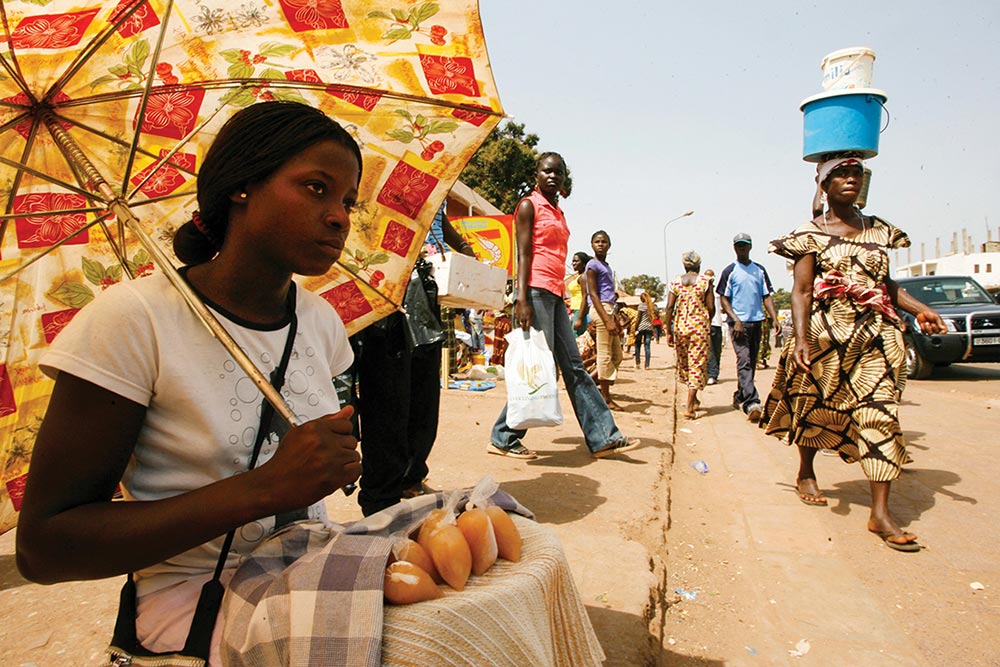
- Electoral violence management: With ongoing internal party wrangling among and between politicians, and given the history of political instability in Guinea-Bissau, it is evident that elections will continue to be keenly contested and will be a triggering factor for unresolved and underlying systemic issues. National peace councils and local peace committees have helped to prevent or reduce violent electoral conflicts. A strong peace infrastructure in Guinea-Bissau ahead of the 2018 and 2019 parliamentary and presidential elections respectively will be an important vehicle through which electoral disputes and tensions will be prevented and addressed.
- Violent extremism and early warnings: A compelling justification to fast-track the establishment of an infrastructure for peace in Guinea-Bissau is the likelihood of increased violence and extremism and the need to curb this, or prevent it from occurring. It is axiomatic that “prevention is better than cure”. There is evidence that the activities of ECOWAS and other international partners in the recent past have been a restraining factor to violence and military incursion into politics. However, recent research and analysis points to the fact that not addressing the root causes of these conflicts could trigger further violent extremism, especially given the vulnerability of the country and the activities of extremist groups around the region. As resources continue to dwindle with political stalemates in the short and long term, competition for scarce resources – especially within the context of existing grievances between groups – will amplify. Violent extremism and radicalism do not just erupt without early warning signs. Local capacities for recognising and averting violent conflicts are important. An infrastructure for peace with a robust early warning system will monitor, analyse and address these indicators at the macro and micro levels.
- Security sector, constitutional and institutional reforms: The challenges associated with institutional transformations in Guinea-Bissau, including security governance, natural resource management and constitutional reforms, need to be evaluated. Perhaps the lack of localisation of content and non-involvement of citizens has been a hindrance to these reforms. An inclusive platform with eminent personalities, such as the National Peace Council, could drive these reforms with local input. There is a need to approach security and institutional reforms from a local and cultural dimension, especially since Guinea-Bissau’s post-colonial defence and security culture has been modelled along Western and Eastern defence and security philosophies that emerged from the cold war period. An infrastructure for peace should be proactive, participatory, inclusive, nonâ€violent, transformative and principle based,7 and would be an important tool in driving state reforms. It is no longer feasible to adopt one universal approach to security governance and institutional reforms. The scope needs to be expanded to incorporate non-state actors and ensure local ownership within the peculiarities and cultural nuances of the state.

- Access to justice: There is a growing link between a lack of access to justice and means of redress and increased violence. A compelling need for the establishment of an infrastructure for peace is that it has the potential to provide redress to parties in conflict and improve access to justice, especially using alternative dispute resolution mechanisms. Access to justice enables citizens to vindicate their rights and/or resolve their disputes, and guarantees equal access to just outcomes. In Guinea-Bissau, like most African countries, land is critical to the well-being of individuals and communities as a means of habitation, livelihood, economic production, social cohesion and community life. With the search for, and exploitation of, natural resources and new uses of land facilitated by national and global economic development, land has become a major source of conflict in many countries.8 An enhanced peace architecture can respond to these issues through joint problem-solving and inclusive dialogue.
- Coordination and sustainability: A key argument in favour of a national peace infrastructure is its ability to coordinate peacebuilding efforts, reduce duplication of efforts, and increase synergy and efficiency. A crucial component of such an infrastructure is to establish a platform for all peace actors and stakeholders for dialogue, consultation, cooperation and coordination. This approach acknowledges that sustainable peace needs a collaborative institutional framework between state and nonâ€state actors.9 Analysis of current structures reveals that while there are few peace architectures, they lack harmonisation, are ad hoc in nature, and do not have legislation and capacity in many areas.
Proposed Components of the Peace Infrastructure
Bissau-Guinean stakeholders will need to determine the structure and components of the peace infrastructure. However, it should take into account existing structures and mechanisms, consider the cultural nuances of Guinea-Bissau, and ensure local participation and ownership. Following best practices from other countries, the infrastructure should aim to have the following components:
- National, district and local peace councils: The peace councils – with the mandate of coordinating peacebuilding initiatives and responding to conflicts through reconciliation, tolerance, trust, confidence-building, mediation and dialogue at various levels – should consist of highly respected people of integrity (with consideration for gender equity, diversity and identity), who are capable of building bridges and crossing political divides. They should be the voices of reason and have impeccable characters. They should acquire requisite competence, knowledge and experience in matters relating to conflict transformation and peace, as well as institutional reforms. The councils should be made up of a broad range of stakeholders with the mandate to promote sustainable peace and human security.
- Community/national early warning system: Conflicts in communities do not just erupt without early warning signs; therefore, local capacities for recognising and averting violent conflict are important. The infrastructure for peace should include a robust early warning programme that ensures early detection and the reporting of conflict indicators to policymakers and community responders.
- Peace education: There is a growing concern that the exposure of children and young people to violence in Guinea-Bissau has led to a pool of vulnerable youth whose world view has been shaped and influenced by a culture of intolerance, radicalism and violence, with grave implications for the future stability of the country. Recognising that a culture of non-violence and community resilience is imperative for sustainable peace in the country, the peace infrastructure should have a component of peace education, with a focus on influencing the youth. Peace education is a pedagogical approach aimed at promoting a culture of peaceful coexistence and a culture of peace.
- Government unit on peacebuilding and legislation: A unit of the government should develop the overall policy on peacebuilding, together with the National Peace Council and the National Peace Forum, and drive its implementation. This unit should liaise and cooperate with other ministries with related policies on peace, justice, defence, foreign affairs, social cohesion, conflict resolution in schools, environment, and social and economic development, and should ensure that these critical areas are reflected in the peace architecture.
- National capacities and peace forum: A think tank platform for consultation, collaboration, cooperation and the coordination of peace issues by all peace actors and stakeholders should be established. This component of the infrastructure should be responsible for the capacity of peacebuilding institutions, government agencies, peace councils and others, including civil society groups. Broad-based skills training in peacebuilding and conflict management – including conflict analysis, conflict early warning and response, conflict resolution and supporting dialogue processes – should be offered to members of the peace council, public servants and civil society groups. A pool or network of trained mediators who can assist the national and local peace councils should also be created.
- Traditional perspectives on conflict resolution: Traditional perspectives and solutions to conflict should be integrated into the peace infrastructure. These traditional mechanisms could be strengthened to promote and sustain a shared vision of society and a culture of peace. Values of reconciliation, tolerance, trust, confidence-building, mediation and dialogue as responses to conflict should be highlighted. With an expected increase in the diversity of citizens within the country, the promotion of social inclusion and cohesion is more important than ever.
- Funding mechanism and donor coordination: Peacebuilding and conflict management strategies require long-term funding by governments, donors, non-governmental organisations and communities. It is important to have a component of the peace infrastructure to coordinate fundraising and ensure synergy of purpose. This component should promote a coordinated funding mechanism for peace activities in the country and avoid duplication of efforts.
Figure 1: Key Features of an Infrastructure for Peace10

Figure 1 highlights the elements expected of the peace infrastructure to enable it to function efficiently. These include the need for an integrated structure, a multidimensional approach and an inclusive process that recognises the historical, traditional, cultural and legal context of the country.
To be effective, the infrastructure for peace in Guinea-Bissau should be:
- Legal: Parliamentary action could provide the necessary legal backing for the work of the infrastructure for peace and increase its leverage to convene conflict actors. It can also make the work of the various levels of the peace architecture visible to the community as a credible state institution. Legislation will also enable the structure to take advantage of dedicated funding from the state’s statutory budget, rather than relying solely on external funding like most non-governmental organisations.
- Autonomous: Institutions and processes that will constitute infrastructures for peace should be part of the state, like the judiciary, but must be seen as free from interference by specific parts of government or political parties.
- Credible: To be autonomous, as well as to have credibility with all parties, the infrastructure for peace should have access to reliable independent funding, and its membership should be transparently selected, based on pre-determined criteria.
- Skilled: Individuals and institutions that make up the infrastructure for peace should not officially have political affiliations, but should be seen as professional with the ability to reconcile, or to bring people together, or as having gravitas that could compel the attention of all stakeholders.
- Inclusive: Representations must include all the constituencies, not just those that are powerful and visible. Consideration should be given to gender, youth, ethnic and religious diversities.
Conclusion
The need for a comprehensive and coordinated infrastructure for peace in Guinea-Bissau, which takes cognisance of existing structures and mechanisms, cannot be overemphasised. The peace architecture should aim at collaborating with the private sector and business community to take advantage of these sectors’ corporate social responsibility and access funding as well as opportunities to increase employment for the youth. Such an infrastructure will provide the country with a firm basis for the coordination and ownership of its conflict transformation initiatives. It will also help to consolidate the present piecemeal work and harmonise the often repetitive, parallel and sometimes dysfunctional efforts of the different actors in peace, conflict and development in Guinea-Bissau. The experiences of Ghana show that articulating a national infrastructure for peace provides a congenial platform for cost-saving, maximisation of input and the creation of a robust and useful conversation among critical actors, thus providing inclusive ownership and traction for peacebuilding, conflict management and sustainable development.
Endnotes
- United Nations (2016) ‘Frank and Sincere Dialogue Vital to Ending Protracted Political Crisis in Guinea-Bissau Top United Nations Official Tells Security Council’, Available at: <https://www.un.org/press/en/2016/sc12245.doc.htm> [Accessed 30 April 2017].
- The Conakry Agreement, reached at the conclusion of the 11–14 October 2016 mediation, is part of the implementation of the Six-point Roadmap adopted by ECOWAS, entitled “Agreement on the Resolution of the Political Crisis in Guinea-Bissau” and signed in Bissau on 10 September 2016.
- UNDP (n.d.) ‘Infrastructures for Peace’, Available at: <http://www.undp.org/content/undp/en/home/ourwork/democratic-governance-and-peacebuilding/conflict-prevention-and-peacebuilding/infrastructures-for-peace.html> [Accessed 30 April 2017].
- Giessmann, Hans J. (2016) ‘Embedded Peace, Infrastructures for Peace: Approaches and Lessons Learned’, Available at: <http://www.berghof-foundation.org/fileadmin/redaktion/Publications/Other_Resources/UNDP_21768_-_Doc_1_-_Embedded_Peace_2016.pdf > [Accessed 30 April 2017]. See also ECOWAS (2014) ‘Final Communique: Forty-fifth Ordinary Session of the Authority of ECOWAS Heads of State and Government’, Available at: <http://news.ecowas.int/presseshow.php?nb=134&lang=en&annee=2014> [Accessed 1 May 2017].
- International Security Sector Advisory Team (ISSAT) (n.d.) ‘Creating a National Dialogue to Prevent Future Conflict in Guinea-Bissau’, Available at: <http://issat.dcaf.ch/Learn/Resource-Library/Case-Studies/Creating-a-National-Dialogue-to-Prevent-Future-Conflict-in-Guinea-Bissau> [Accessed 1 May 2017].
- Eze, Chukwuemeka B. (2017) Advisory Note to the United Nations Integrated Peacebuilding Office in Guinea Bissau.
- Global Partnership for the Prevention of Armed Conflict (GPPAC) (2010) ‘Infrastructures for Peace, Working Paper: March, 2010’, Available at: <https://www.google.com.gh/url?sa=t&rct=j&q=&esrc=s&source=web&cd=1&ved=0ahUKEwjFjquEz_LTAhXJLsAKHf_VAJgQFggkMAA&url=<http%3A%2F%2Fen.nai.nl%2Fmmbase%2Fattachments%2F779584%2FInfrastructures_for_PeaceWPMarch10without_annex.pdf&usg=AFQjCNEdZINxCnTc5NouGbFm0a3qJhZG0Q&sig2=lQu0M7YCFO_Ok9ny1OpyVg> [Accessed 10 May 2017].
- Ghai, Yash and Cottrell, Jill (2008) ‘The Rule of Law and Access to Justice: Findings of an ABA Project on Access to Justice’, Available at: <http://www.lexisnexis.com/documents/pdf/20080924042712_large.pdf> [Accessed 10 May 2017].
- Ibid.
- WANEP presentation made at a national stakeholders meeting to establish an Infrastructure for Peace in Niger, June 2015.

